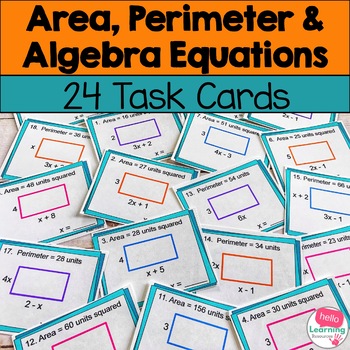Area and Perimeter with Algebra Task Cards
- PDF
Description
This set of 24 area and perimeter with algebra task cards will help your students practice using variables to write expressions to solve mathematical problems.
On each card, students are given either the area or the perimeter of the rectangle. Students will write algebraic equations to solve for x for each problem.
This set of task cards includes:
- 12 area task cards
- 12 perimeter task cards
- student recording sheet
- answer key
Students will get valuable practice with the area and perimeter formulas, using variables to write expressions, and writing algebraic equations when they work on this set of engaging task cards.
You may also like my:
Angle Measures and Algebra Task Cards
Triangles, Angles and Algebra Task Cards
Expanding and Factoring Algebraic Expressions Task Cards
Follow me and be notified when new products are added to my store. New products are always 50% off for the first 24 hours they are posted!





